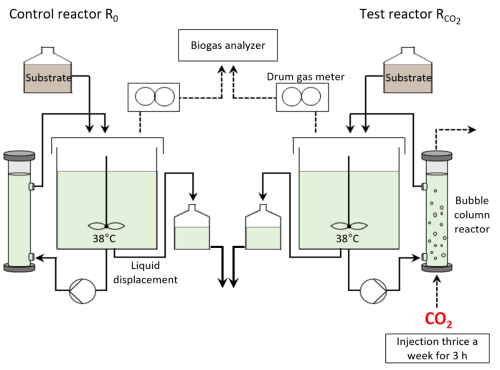Energetic use of CO2 to increase the methane yield during anaerobic digestion of renewable energy crops
|
Project team: Daniela Polag, Frank Keppler (project coordination and isotope analytics)
Michael Lebuhn, Bayerische Landesanstalt für Landwirtschaft (microbial analyses) |
Granted by:
|
Background/Summary
In recent years, the demand for renewable energy and the reduction of greenhouse gases such as CO2 has become increasingly important within the framework of energy transition.
The aim of the project is an energetic use of CO2 to increase the methane yield during biogas production from renewable energy crops such as maize silage. The utilisability of CO2 is based on the bioconversion process first described almost 30 years ago. Sato and Ochi showed in 1994 that CO2 is converted into energetically usable methane (CH4) without the addition of hydrogen (H2). However, this effect has so far only been demonstrated using sewage sludge or food waste as substrates.
The main task of this project is to evaluate the bioconversion of CO2 to CH4 during the anaerobic digestion of different NawaRo substrates (maize, grass, whole plant silages). The CO2 uptake potential and the additional CH4 production will be quantified under various operational conditions (organic loading rate, CO2 injection). Accompanying isotope analyses and microbiological investigations will reveal the underlying mechanisms and will provide a better understanding of the process.
In a next step, the results from the laboratory experiments will be transferred to a pilot plant. Possible applications in practice are the use of highly concentrated external CO2 waste streams (e.g., from industrial processes) or the recirculation of CO2 that accumulates as a waste product during biogas upgrading.
Thus, CO2 emissions are avoided or reduced and converted into energetically usable CH4.

Schematic of the lab-scale digester system, including anaerobic digesters (control R0 and test RCO2), recirculation loops and bubble column reactor (scheme by Meriam Muntau, TU München)



